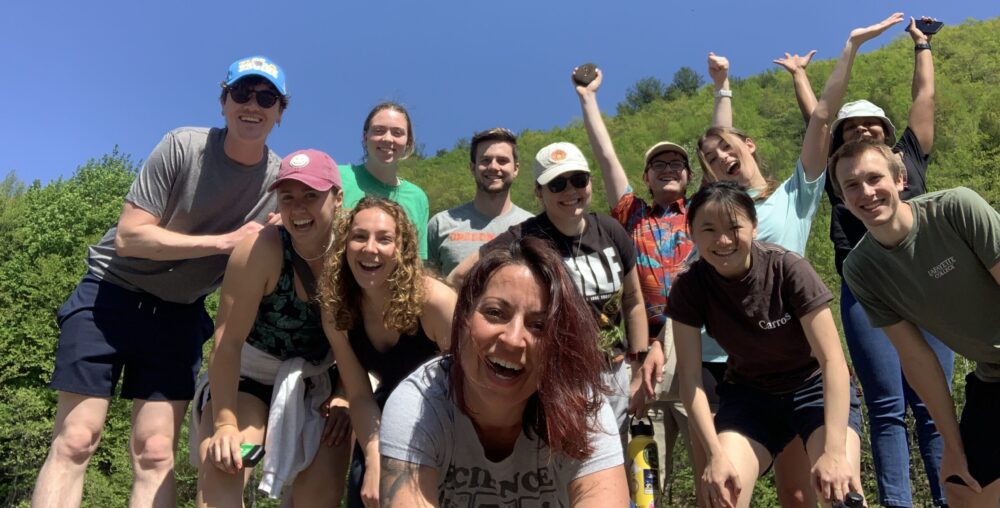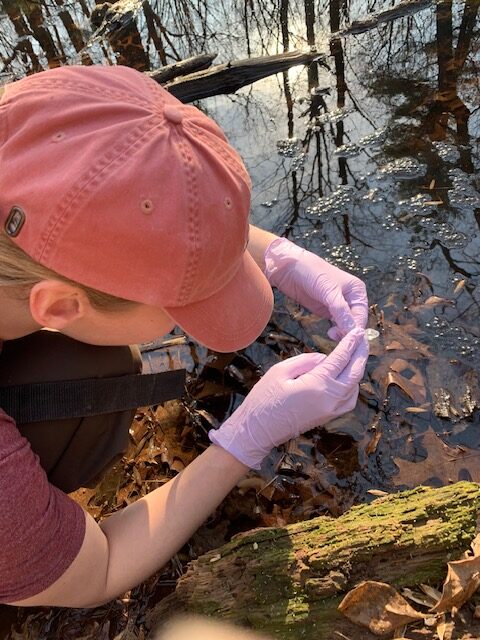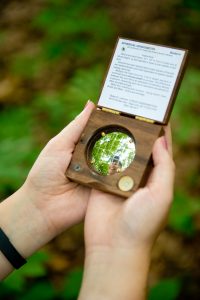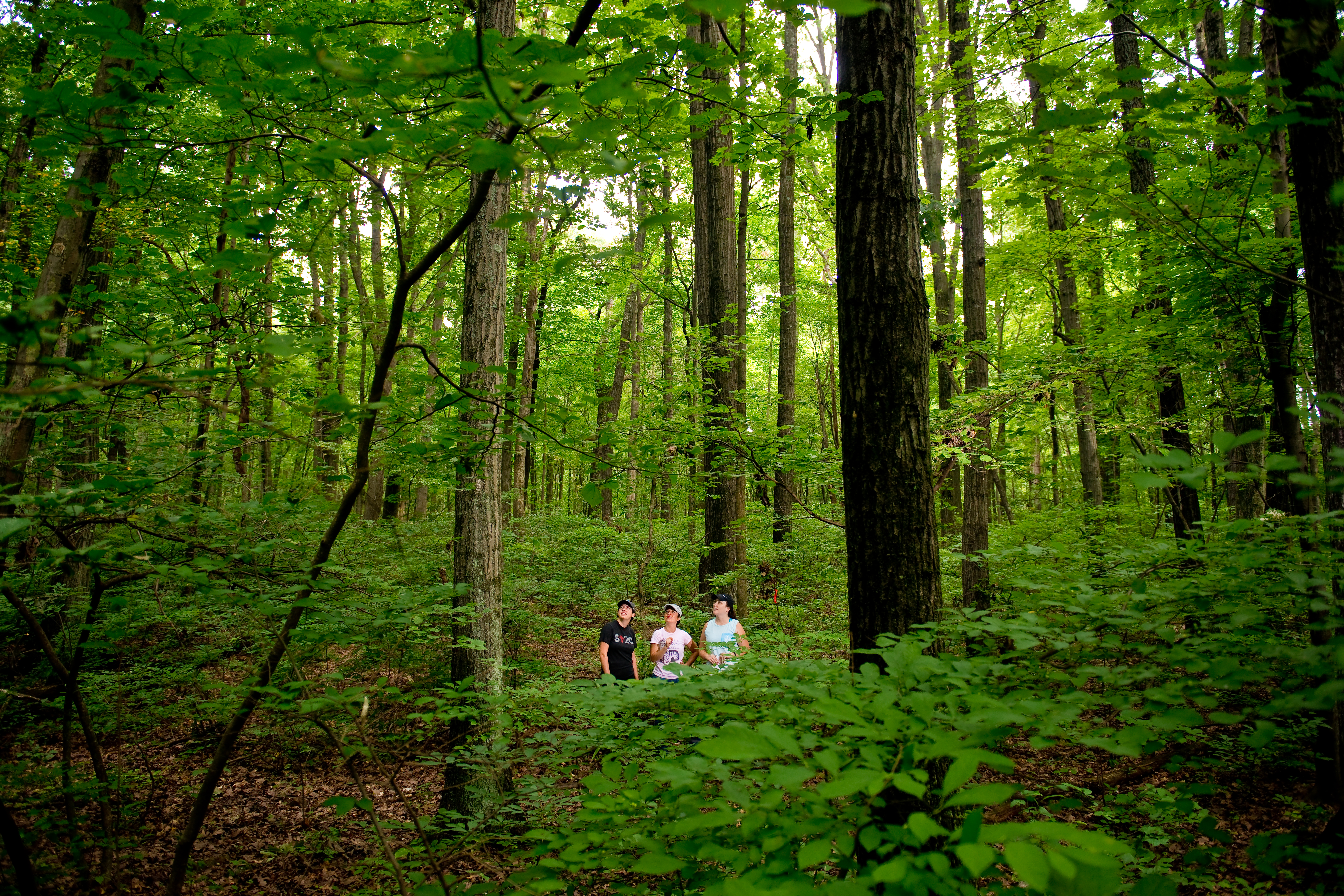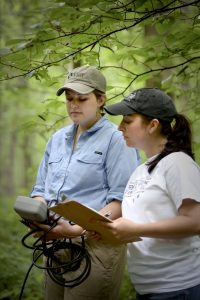
Katie Engberg ’15 and I collecting monitoring data at our isolated site in Jacobsburg State Park, which is more than 1000 m from the nearest road.
One of my Biology Honors Thesis students, Katie Engberg ’15, became interested in another aspect of vernal pools. She noted that two of the pools we monitor (i.e., one constructed and one natural) are within 100 m from two roads, and another three pools are isolated in a forested habitat >1,000 m from the nearest road. We began to wonder about the effect of road proximity on vernal pool water quality and amphibian survival and reproduction. Therefore, Katie and I designed a field study to address this specific question: how do the abundance and movement patterns of wood frogs compare between isolated vernal pools and vernal pools in close proximity to roads? This study and our results are described in the Journal of the Pennsylvania Academy of Science (TITLE: Effect of road proximity on reproductive effort and movement patterns of the wood frog (Rana sylvatica).
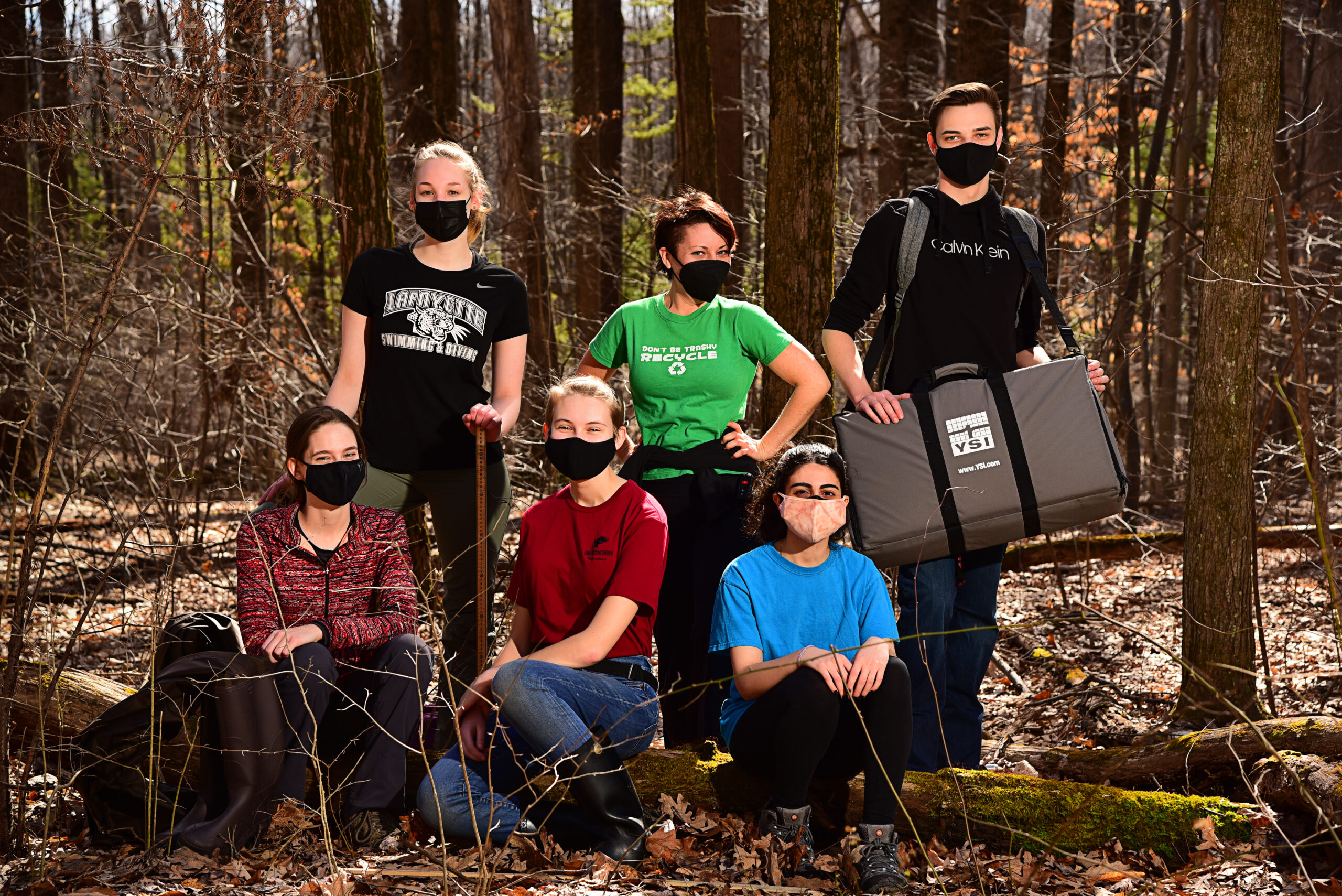
Our habitat fragmentation work continued right through the pandemic. From L to R: Katie Kavanagh ’21, Emily Wilson ’22, Nikki Morley ’21, Me, Donna Hanna ’22, and Austin Best ’22
Honors Thesis students, Emily Wilson ’22 and Declan Winters ’23, built on Katie’s project by attempting to determine whether habitat fragmentation and limited dispersal ability due to roads impacts the genetic diversity of the wood frog population at Jacobsburg State Park. We used microsatellite loci to assess within- and between-pool measures of genetic diversity, population structuring, and gene flow for wood frogs at Jacobsburg State Park. We recently collaborated with Dr. Stephanie Coster at Randolph-Macon College to submit a manuscript describing this work to Ecology & Evolution. It was accepted pending revision, and I’ll post it soon. Our main finding is that, while one pond was genetically distinct likely because the poor conditions lowered recruitment and survival, the roads do not appear to be affecting the genetic diversity of the wood frog in this location.
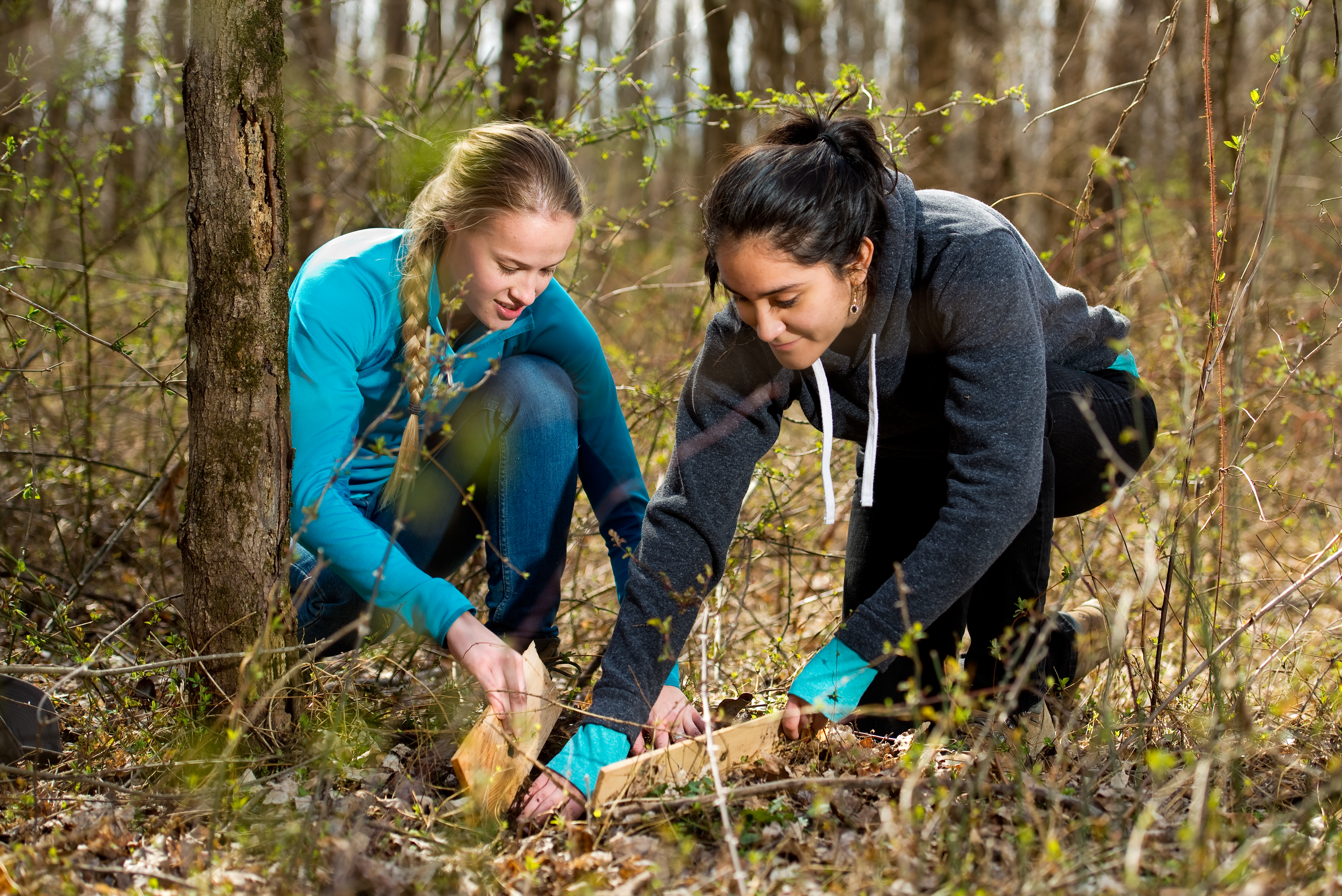
Tessa Broholm ’17 and Karolina Vera ’17 check under artificial cover objects (ACOs) for woodland salamanders.
Although much of our vernal pool work has focused on the wood frog, each amphibian species uniquely responds to ecological conditions in its environment. Therefore, the methods that we used to investigate the effect of road proximity on reproductive effort and movement patterns of the wood frog are being repeated for other vernal pool indicator species, such as the spotted salamander (Ambystoma maculatum), and for terrestrial woodland salamanders, such as the redback salamander (Plethodon cinereus). One aim of this monitoring study is to investigate the effect of road proximity, canopy cover, soil acidity, soil moisture, and leaf litter depth on the abundance and distribution of woodland salamanders in Jacobsburg State Park. To achieve this goal, we utilize the artificial cover object (ACO) method, which is considered a standard method for comparing amphibian relative abundance among sites.
Another aim of this research is to assess the utility of terrestrial salamanders as bioindicators for monitoring the impacts of forest habitat fragmentation by roads. If the abundance and distribution of terrestrial salamanders can be related to certain microhabitats or park management actions, then continued monitoring of plethodontid bioindicators can provide a measure of ecosystem integrity over time. Bioindicator species are used by conservation and restoration biologists to screen the overall health of the ecosystem.
LAB FAM members who have contributed to this project: Katie Engberg ’15, Elizabeth Osborn ’15, Tessa Broholm ’17, Emily Lynch ’18, Ryan Dougherty ’19, Nikki Morley ’21, Emily Wilson ’22, and Declan Winters ’23
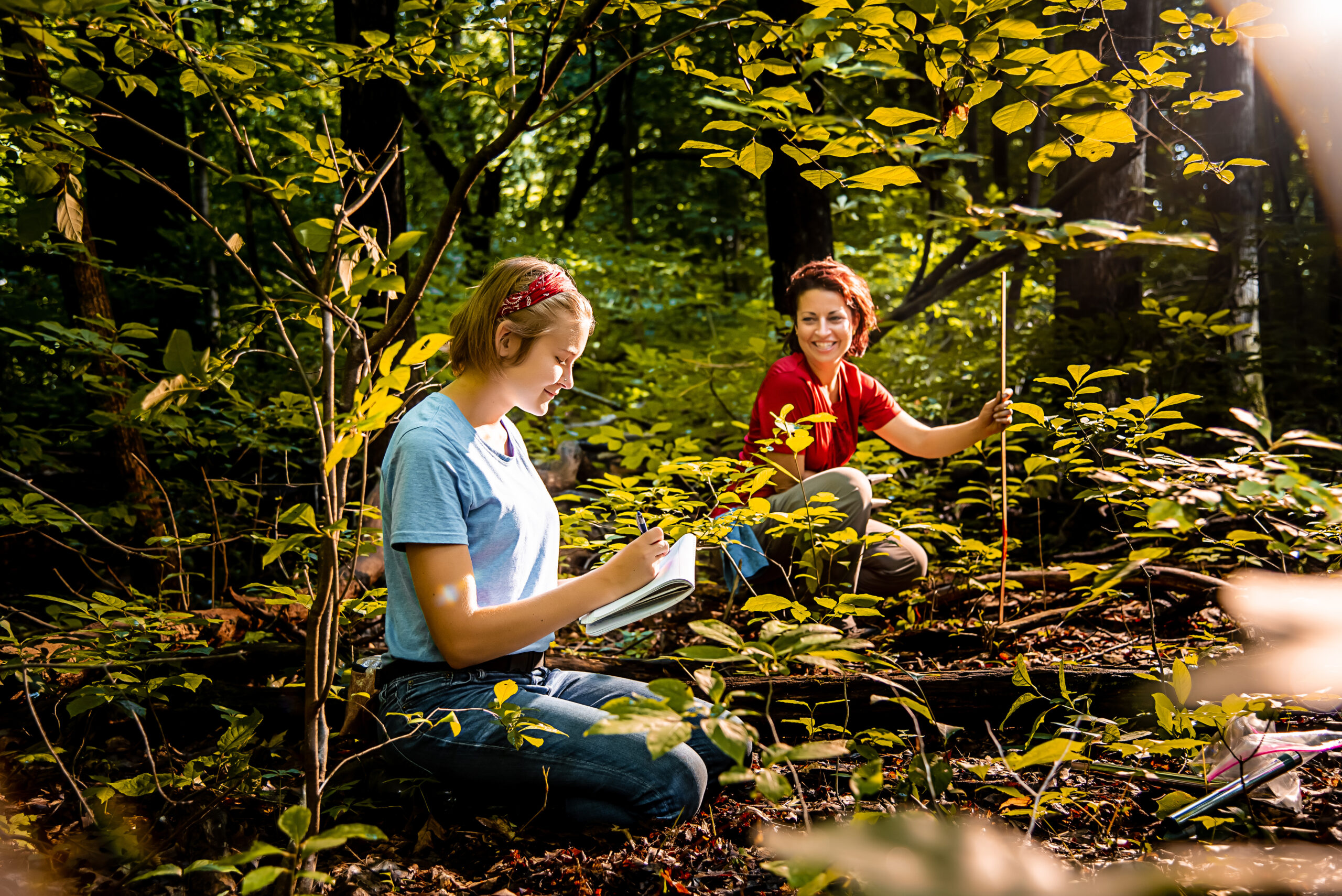
Nikki Morley ’21 added another parameter to our monitoring study: salinity. She hypothesized that soils within the fragmented habitat would have higher salinity levels, especially in early spring following road salting events and snow melt.
So far, our results indicate that:
- terrestrial salamanders are 3 times more abundant where there is no habitat fragmentation by roads and at greater distances from the road at the fragmented site as opposed to the isolated site
- salamander abundance is significantly related to both soil pH and litter depth, suggesting that terrestrial salamanders are reflective of microhabitat changes related to forest habitat fragmentation
- based on their abundance and demonstrated sensitivity to overall habitat fragmentation, road proximity, and certain environmental characteristics, the red-backed salamander could be an ideal bioindicator of habitat fragmentation in Jacobsburg State Park.
